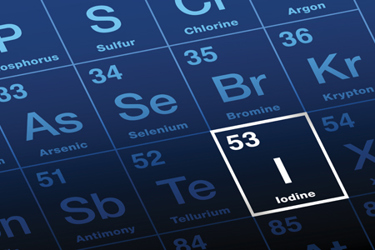Evaluating The Role Of Iodine Extraction In Water Cleanup Initiatives
By Ellie Gabel

How a potential contaminant itself can be utilized in treatment to remove other contaminants.
Water contamination poses one of the greatest threats to the world at large. As such, specialists seek sound and sustainable methods for cleaning vital water sources for safer use.
A wave of scientific and technological developments has paved the way for newer solutions, including employing iodine extraction. Although commonly used for industrial benefits, this method may deliver more pristine water for everyone.
How Can Iodine Extraction Aid Water Cleanup Initiatives?
Research has shown impressive antimicrobial and disinfectant properties1 in iodine, making it a compelling player in water purification. When utilized in treatment facilities, it can eliminate harmful contaminants, bacteria, and viruses, ensuring a safer microbial load in drinking water.
Iodine binds to various heavy metals2 — including lead, mercury, and aluminum — allowing specialists to filter and remove toxic compounds from water sources. Its oxidative reactivity can also degrade pharmaceuticals, synthetic pesticides, and other organic compounds in wastewater.
Contaminated soil and sediment may also undergo electrokinetic remediation — electromigration with ions and particles3 — to remove heavy metals and harmful substances. This strategy would prevent polluted earth from leaching into water bodies.
What Are the Most Common Iodine Extraction Methods?
Mining companies must first extract iodine for water remediation purposes. Extraction methods vary depending on the source and location of reserves. Generally, miners extract iodine from natural brines, seawater, and mineral deposits in the following ways:
- Adsorption: Adsorbs iodine onto activated carbon and zeolites4 from seawater and captures the compound by washing it with a solvent.
- Chlorination: Adds chlorine gas to the brine to oxidize ions, removing the iodine through adsorption or distillation.
- Sulfur dioxide reduction: Uses sulfur dioxide and other chemicals to turn iodate into iodine for easier extraction.
- Roasting: Extracts iodine from minerals by releasing evaporated iodine and condensing it5 for collection.
Regardless of the method used for extraction, the process often involves isolating the iodine, refining it through crystallization or distillation, and processing it for products and other uses.
Likewise, extracting iodine from seaweed and other natural sources is a more sustainable solution. Interestingly enough, Japan — a country where nori is a staple in its cuisine — had the world’s largest iodine reserves at 4.9 million metric tons6 in 2023.
Challenges Of Iodine Extraction For Bioremediation
Iodine extraction holds promising outcomes from water cleanup initiatives. However, excessive amounts could be toxic for people and the environment.
Although iodine is naturally occurring, it also maintains industrial purposes, seeping as runoff with other chemicals and increasing the likelihood of overexposure through water and food consumption. Common sources of iodine include:
- Industries like pharmaceuticals, chemicals, and electronics.
- Fertilizers, pesticides, and fungicides containing iodine ingredients.
- Accidental spills during transportation and storage.
Too much or too little iodine could result in brain damage,7 impaired physical and mental development, and thyroid issues, with the worst effects on children. In the natural world, iodine contamination disrupts aquatic life by posing a risk to species’ health, growth, reproduction, and survival.
Because iodine bioaccumulates, humans may also become exposed when they consume seafood or animal products. For instance, one study found iodine concentrations were five to 10 times higher8 in saltwater fish than in freshwater fish.
Considerations For The Future
Technological advancements will continue evolving water cleanup initiatives, with iodine extraction being a possibility in the future. However, industry experts and governments should consider the following:
- Maximized innovation: Research and invest in more sustainable extraction methods and technologies to minimize environmental and human health impacts.
- Targeted delivery: Concentrate on specific contaminants and microbial communities for effective treatment.
- Integrated systems: Synergize iodine extraction methods with existing treatment systems for more flexible implementation.
- Monitoring and risk assessment: Report on iodine concentrations, water quality, and remediation processes while conducting thorough environmental impact reviews.
Other considerations pertain to regulatory frameworks, stakeholder participation, and public perception. For example, laws should set clear protocols and safety guidelines for using iodine in water treatment. Exchanging knowledge, research, best practices, and technologies among companies, governments, and specialists is particularly beneficial.
Likewise, community engagement will ensure that the public knows the advantages and implications of using iodine extraction in purification and remediation methods.
Iodine: A Natural Approach To Cleaner Water
Experts can invigorate water treatment and minimize the effects on people and the planet with a careful approach to iodine extraction. The best way forward is through stakeholder involvement and advancements in tools and technology.
References:
- https://www.sciencedirect.com/science/article/pii/S0014305723007565
- https://www.ncbi.nlm.nih.gov/pmc/articles/PMC8552616/
- https://www.mdpi.com/2071-1050/16/11/4616
- https://pubs.rsc.org/en/content/articlehtml/2023/ta/d2ta09448g
- https://www.sciencedirect.com/science/article/abs/pii/S095965262031194X
- https://www.statista.com/statistics/264946/global-iodine-reserves-bycountries/
- https://link.springer.com/chapter/10.1007/978-3-030-53893-4_17
- https://www.sciencedirect.com/science/article/abs/pii/S088915759790541X
 About The Author
About The Author
Ellie Gabel is a science writer specializing in environmental science and innovative technologies. She can be reached at ellie@revolutionized.com.
